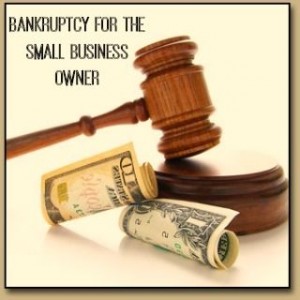 Bankruptcy is a topic that probably fills any business owner, no matter the size of the business, with dread. However, if you’re a small business owner and you’re finding that business isn’t doing well and it’s becoming increasingly harder to pay your creditors, it’s crucial that you understand the options available to you in the event of your having to file for bankruptcy. Choosing the right option when it comes to bankruptcy can be vital to ensure that you’re able to maintain your small business and minimize the loss of assets. If you’re considering filing for bankruptcy, you should always consult a good lawyer or advisor such as weikbankruptcyattorney.com.
Bankruptcy is a topic that probably fills any business owner, no matter the size of the business, with dread. However, if you’re a small business owner and you’re finding that business isn’t doing well and it’s becoming increasingly harder to pay your creditors, it’s crucial that you understand the options available to you in the event of your having to file for bankruptcy. Choosing the right option when it comes to bankruptcy can be vital to ensure that you’re able to maintain your small business and minimize the loss of assets. If you’re considering filing for bankruptcy, you should always consult a good lawyer or advisor such as weikbankruptcyattorney.com.
Bankruptcy Types
There are a number of various types of bankruptcy that you can file for, depending on how your business is structured. Here is a description of each one.
Chapter 7
Often referred to as liquidation, chapter 7 bankruptcy is the best route to take when a business has no future prospects and is lacking in substantial assets. Chapter 7 bankruptcy is often suited to small businesses and sole proprietorships, which often lack substantial assets that can be used to repay debt. Under Chapter 7, any available assets will be sold to satisfy outstanding debts.
Chapter 11
Chapter 11 is designed to support the regrowth and continuation of a business by using a reorganization plan. Although filing for a Chapter 11 bankruptcy in order to help keep your business alive can be a very complicated process, it is not reserved solely for large corporations – some small businesses and sole proprietorships are also eligible for Chapter 11 bankruptcy. If you are considering choosing this option when filing for bankruptcy, you should expect to be under intense scrutiny and examination from a trustee who will be appointed by the court.
Chapter 13
Also known as debt management plan, the Chapter 13 option for bankruptcy allows small business owners to file a repayment plan with the bankruptcy court, detailing how you plan to repay your creditors what they are owed. Although this type of bankruptcy is usually reserved for consumers such as credit card users, it can also be used in some circumstances by sole proprietorships. However, bear in mind that if your personal and business assets are combined, you could be at risk of losing personal assets such as your home by choosing this option.
Chapter 12
Designed for ‘family farmers’ with ‘regular annual income’, under the Chapter 12 option for bankruptcy debtors are required to produce a repayment plan which they will use to repay their creditors in instalments over a three to five year period. Again, this is a popular option with consumers, but can also be used by small business owners and sole proprietorships.
Before you file for bankruptcy, bear in mind that there are a number of services available that could help you get your business back on track without the need to declare bankruptcy. Ask your lawyer or a financial advisor for more information.
Learn more
If you have had to file for bankruptcy, your credit score will now be about as bad as it gets. A bankruptcy can stay on your file for as long ...
Every startup business is at risk of bankruptcy, but with extensive research it is possible to decrease the risks. Trying to get a startup establi ...
Individual Canadians collectively owe a staggering $1.7 trillion, while the average debt load is now over $22,000 per Canadian. For many with mort ...
Education is a significant part of many people’s life. It has become essential for anyone who wants to reach high in life, attain their goals and ...
While owning a business can be a tremendously beneficial venture, there are also many risks and pitfalls associated with the possession of a busin ...







